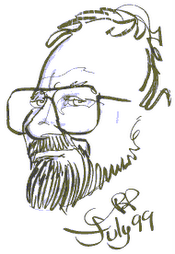
Here is, to my mind, the best of the artist's impressions of the Kenilworth Castle garden at the time of Queen Elizabeth's visit. Image by kind permission of English Heritage.
Random thoughts and images roughly based around my visits to some interesting locations.

 This coming weekend is an Elizabethan Extravaganza at Kenilworth castle. English Heritage describe it on their website in these words "The Queen's favourite, Sir Robert Dudley is hosting an extravagant pageant at the castle and you are invited! Enjoy falconry, hunting on horseback, music and have-a-go dancing, lessons in etiquette and social behaviour and mounted tournament games!" Sounds like great fun, weather permitting.
This coming weekend is an Elizabethan Extravaganza at Kenilworth castle. English Heritage describe it on their website in these words "The Queen's favourite, Sir Robert Dudley is hosting an extravagant pageant at the castle and you are invited! Enjoy falconry, hunting on horseback, music and have-a-go dancing, lessons in etiquette and social behaviour and mounted tournament games!" Sounds like great fun, weather permitting.
 The Elizabethan garden that will be re-created at Kenilworth was designed and planted in readiness for the visit of Queen Elizabeth I in 1575. English Heritage run regular events at Kenilworth and here is a shot of a re-enactment of that visit showing the Queen addressing her loyal subjects.
The Elizabethan garden that will be re-created at Kenilworth was designed and planted in readiness for the visit of Queen Elizabeth I in 1575. English Heritage run regular events at Kenilworth and here is a shot of a re-enactment of that visit showing the Queen addressing her loyal subjects.

 I'm looking forward to my visits to Kenilworth Castle this year. Last year was special, as Leicester's Gatehouse was opened to the public for the first time, and the last stage of the two-year excavation of the Elizabethan garden was drawing to a close. The excavation was in preparation for as complete and accurate a reconstruction as possible of the garden as it was when Elizabeth I visited the Earl of Leicester in 1575. The previous garden was set out as a simple knot, with topiary, gravel walks and herb planting - mostly lavender. Work starts this year on the reconstruction. As I've followed the excavations over the last two seasons and visited them with the site director, I'm really keen to see what the reconstruction will eventually look like, and how it will progress. Hats off to English Heritage for their policy of public involvement: usually I get to visit active excavations through my membership of archaeological societies, but there were weekly guided tours of the Elizabethan garden dig for all who turned up. An excavation newsletter is available online that contains an artist's impression of the final layout.
I'm looking forward to my visits to Kenilworth Castle this year. Last year was special, as Leicester's Gatehouse was opened to the public for the first time, and the last stage of the two-year excavation of the Elizabethan garden was drawing to a close. The excavation was in preparation for as complete and accurate a reconstruction as possible of the garden as it was when Elizabeth I visited the Earl of Leicester in 1575. The previous garden was set out as a simple knot, with topiary, gravel walks and herb planting - mostly lavender. Work starts this year on the reconstruction. As I've followed the excavations over the last two seasons and visited them with the site director, I'm really keen to see what the reconstruction will eventually look like, and how it will progress. Hats off to English Heritage for their policy of public involvement: usually I get to visit active excavations through my membership of archaeological societies, but there were weekly guided tours of the Elizabethan garden dig for all who turned up. An excavation newsletter is available online that contains an artist's impression of the final layout.
